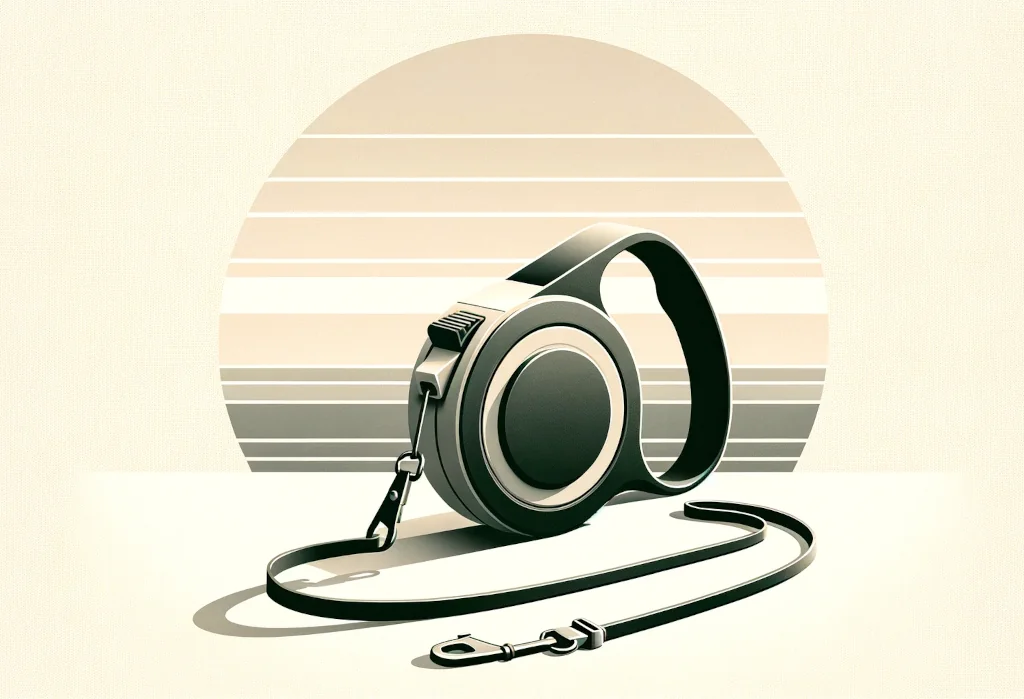
Sometimes it feels like managing a rollercoaster, not a leash. We’ve all been there, struggling to find the balance between giving our furry best friends freedom and keeping them safe. This post promises a clear guide on the smartest ways to use retractable dog leashes, fitting for various scenarios you might find yourself in with your pup.
Quick Takeaways:
- Always match the leash strength to your dog’s size, and regularly inspect it for wear and tear to avoid unexpected breaks.
- Use retractable leashes in open, less crowded areas and avoid using them in heavy traffic, wildlife areas, and crowded places to prevent accidents.
- Train your dog on both retractable and regular leashes with specific commands for wandering and staying close to ensure a safe and enjoyable walk.
When is a Retractable Leash the Right Choice?
Choosing the right type of leash for your four-legged friend can sometimes feel like finding a needle in a haystack. But, retractable dog leashes shine the brightest in certain scenarios. If you’ve ever found yourself in an open area, where your dog can roam a bit more freely without the risk of running into busy streets or crowds, a retractable leash could be just what you need.
Here’s the scoop: retractable leashes are ideal for:
- Open, less crowded areas: Think parks or vast, open spaces where your dog can safely explore without finding themselves in harm’s way.
- Training sessions: Especially for recall training, giving your dog a taste of freedom with the safety net of being on a leash.
- Long walks in safe environments: Letting your dog sniff around and engage with their surroundings can make for a more enriching walk.
One piece of advice? Always ensure the area is safe for a retractable leash, keeping an eye out for potential hazards like nearby roads or too many people.
What Are the Safety Concerns with Retractable Leashes?
While retractable leashes offer freedom and adventure for our furry friends, they come with their own set of risks that every dog owner should be aware of. The key to mitigating these risks lies in awareness and understanding the environment you’re in.
Here are some safety concerns to consider:
- Sudden jerks: A dog darting off suddenly can cause injuries to both the dog and the owner.
- Leash burns or cuts: The cord can cause burns or cuts if it gets wrapped around you or your dog.
- Malfunctioning lock: If the lock fails, dogs can run into dangerous situations unexpectedly.
But here’s how you can stay safe:
- Always keep a firm grip on the handle and be ready to lock the leash at a moment’s notice.
- Be vigilant and keep your furry friend within eyesight, especially in areas where they might get too excited.
- Regularly check the leash for any wear and tear that might cause the locking mechanism to fail.
How to Properly Use a Retractable Dog Leash?
Using a retractable dog leash correctly is not just about giving your dog freedom; it’s about maintaining control in a way that keeps both you and your canine companion safe. Here’s the lowdown on getting it right:
- Start with the Basics: Before venturing out, ensure your dog is well-behaved on a shorter leash. Good leash manners are a must.
- Lock and Unlock Wisely: Get familiar with the lock feature. Practice locking and unlocking the leash in your home or a safe environment until it becomes second nature.
- Maintain Control: Always keep your dog at a manageable distance, especially in areas where they might get startled or tempted to run.
- Be Mindful of Your Surroundings: Keep an eye on what’s ahead and anticipate any potential hazards.
- Regular Inspection: Before each walk, inspect your retractable leash for any signs of wear and tear. Safety first!
Here’s a unique tip: If you’re in a situation where you need more control quickly, instead of fumbling with the lock, gently reel your dog in by shortening the leash, keeping your movements smooth and steady. This technique can help maintain calmness in potentially stressful situations.
By following these guidelines and understanding the right contexts for using a retractable leash, you’re setting the stage for many enjoyable and safe walks with your beloved pet. Remember, the key is always to be attentive and responsive to your dog’s needs and the environment around you. Happy walking!
Where Should You Avoid Using Retractable Leashes?
While retractable dog leashes offer flexibility and freedom for your canine friend to explore, there are certain places where they might do more harm than good. Let’s dive into some specific locations and situations where retractable leashes could lead to trouble:
-
Crowded Places : Whether you’re navigating through a bustling city street or attending a local fair, crowded areas are a no-go for retractable leashes. The extended leash can easily trip up unsuspecting pedestrians or get tangled with other dogs, creating a potentially hazardous situation.
-
Near Traffic : Roads and intersections are dangerous places to use a retractable leash. The increased distance between you and your dog can make it difficult to quickly pull them back from an approaching vehicle.
-
Wildlife Areas : Using a retractable leash in areas with wildlife can put both your dog and the local fauna at risk. Your dog might chase after a squirrel or bird, leading them into dangerous situations or disrupting the habitats of local animals.
-
Inside Pet Stores : Though it might seem like a good place to give your dog some leeway, the confined space filled with enticing smells and products can lead to accidents or damaged merchandise.
-
Areas with Known Hazards : Places with sharp objects on the ground, like construction sites, or areas prone to toxic spills should be avoided. The further distance makes it harder to steer your dog clear of these dangers.
Insightful Tip : A unique place where retractable leashes are especially problematic is near escalators or lifts in shopping malls or buildings. Dogs can become scared or act unpredictably, and an extended leash can quickly become caught in the moving parts, posing a severe risk to your pet and others.
Training Your Dog to Walk on a Retractable Leash
Training your dog to walk nicely on a retractable leash does not have to be a tug-of-war. Start by familiarizing them with the leash in a safe, controlled environment like your backyard. Here are a few tips to ensure a rewarding walking experience for both of you:
-
Introduce Slowly : Let your dog sniff and get used to the leash and its mechanisms. Practice extending and retracting the leash while your dog is calm and focused.
-
Use Commands : Incorporate commands like “stop” and “come” to manage the distance between you and your dog. Rewards and treats can be very effective in reinforcing these commands.
-
Maintain Control : Never let the leash extend fully automatically. Always be in control, deciding when your dog can wander and when they need to be close.
-
Leash Etiquette : Train your dog to understand that being on a retractable leash doesn’t mean free rein. They should still follow your commands and stay by your side in situations that call for it.
Remember, patience and consistency are key. Every dog is different, and some might take to a retractable leash more quickly than others.
Common Mistakes to Avoid
Even the most experienced dog owners can slip up when using retractable leashes. Here are some common pitfalls and how to steer clear of them:
-
Not Locking the Leash in Busy Areas : Always keep the leash short and locked in crowded or dangerous situations. It’s tempting to give your dog freedom, but safety should always come first.
-
Using a Weak Leash for a Strong Dog : Make sure the retractable leash you choose can handle your dog’s strength and size. The last thing you want is for the leash to break when you need it most.
-
Neglecting Leash Maintenance : Regularly check your retractable leash for signs of wear and tear. A frayed leash is a weak leash.
-
Forgetting to Train for Regular Leashes : Your dog should be comfortable with both retractable and standard leashes. Over-reliance on one can lead to behavioral issues.
Unique Insight : One often overlooked mistake is not teaching your dog a specific cue for when they can wander and when they need to stay close. It can be as simple as “Go explore” for free time and “Stay close” for tighter control. This dual-command system can significantly enhance your walking experience, ensuring that your dog knows exactly what’s expected of them, leading to fewer tangles and mishaps.
In conclusion, while retractable leashes offer great opportunities for exploration and freedom, they’re not suitable for every setting. Understanding where and how to use them effectively, combined with proper training, can make all the difference in the safety and enjoyment of your walks. Keep these tips in mind, and you and your furry friend are all set for many happy and safe adventures ahead.
Alex, a passionate animal lover, has experience in training and understanding animal behavior. As a proud pet parent to two dogs and three cats, he founded AnimalReport.net to share insights from animal experts and expand his knowledge of the animal kingdom.




